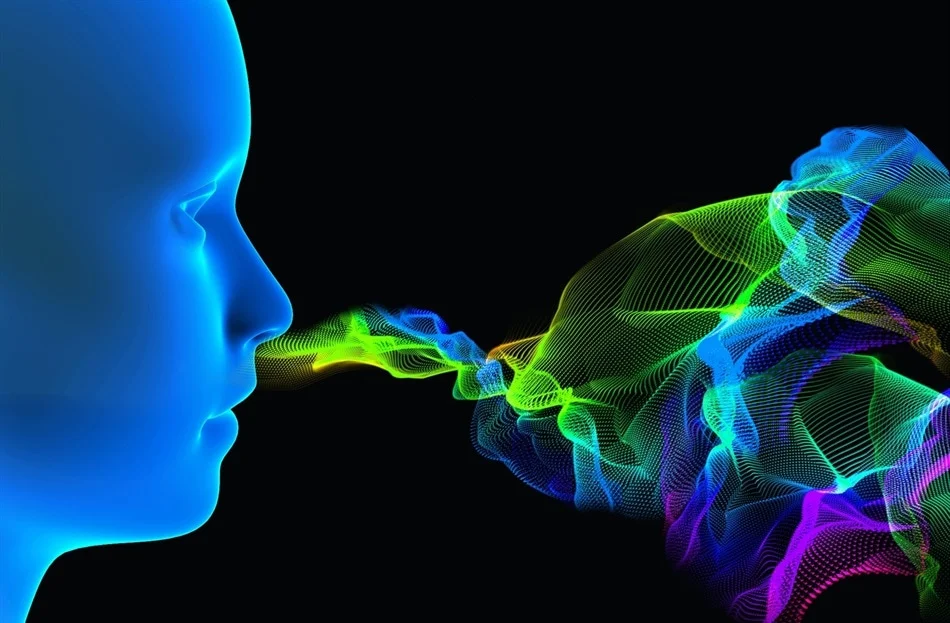With five basic senses, humans are able to respond and acquire information about the surrounding environment, which aids survival. Each sense is pretty powerful in its own way; our sense of smell human grants us the ability to identify around 10,000 different odor molecules.
人类拥有五种基本感官,能够对周围环境做出反应并获取信息,这有助于生存。每种感觉都以自己的方式非常强大;我们人类的嗅觉赋予我们识别大约1万种不同气味分子的能力。
Image Credit: Shutterstock.com/ goa noviOver the ages, smell has proved crucial for survival as it has enabled the tracking of food and water sources, enabling us to sniff out danger, as well as shaving advantages when it comes to communication and mating. Nowadays, our sense of smell is targeted by various industries such as beauty, cosmetics, food, and wellness, where developing new and attractive fragrances and odors are key to the success of products.
多年来,嗅觉被证明对生存至关重要,因为它使我们能够追踪食物和水源,使我们能够嗅出危险,并且在交流和交配方面具有优势。如今,我们的嗅觉被美容、化妆品、食品和健康等各种行业所瞄准,在这些行业中,开发新的、有吸引力的香味和气味是产品成功的关键。Now, a team of researchers at the Tokyo Institute of Technology (Tokyo Tech) has applied machine learning to develop an odor prediction technique that could be used to design new fragrances, odors, and smells.
现在,东京工业大学(Tokyo Tech)的一组研究人员应用机器学习开发了一种气味预测技术,可用于设计新的香水、气味和嗅觉。Humans perceive odor based on the neurological response pattern between olfactory nerve cells and various odors. Various sensations and responses can be invoked through the careful manipulation and tailoring of the physiochemical features of different odors. We may even have strong connections or memories linked to specific smells which evoke familiarity or desire.
人类感知气味是基于嗅觉神经细胞对各种气味的神经反应模式。通过对不同气味的物理化学特征的精心操纵和剪裁,可以唤起各种感觉和反应。我们甚至可能对唤起熟悉或欲望的特定气味有强烈的联系或记忆。Through this provocation of olfactory nerve cells, odors can be tailored to create a specific response as required by manufacturers, such as perfume manufacturers aiming to call to certain human desires or food producers wanting to make their products appealing to the senses. However, when trying to manipulate odor and design an intended impression, current prediction models are limited as sensing data cannot be predicted.
通过对嗅觉神经细胞的这种刺激,气味可以根据制造商的要求进行定制,以产生特定的反应,例如香水制造商旨在唤起人类的某些欲望,或者食品生产商希望使他们的产品吸引感官。然而,当试图操纵气味和设计预期的印象时,当前的预测模型是有限的,因为传感数据无法预测。To address this issue head-on and develop better methods for odor design, the Tokyo Tech team applied machine learning-based odor prediction models.
为了正面解决这个问题并开发更好的气味设计方法,东京工业大学的团队应用了基于机器学习的气味预测模型。We used a machine-learning-based odor predictive model that we had previously developed to obtain the odor impression. Then we predicted the mass spectrum from odor impression inversely based on the previously developed forward model.
Professor Takamichi Nakamoto, Tokyo Tech
我们使用了之前开发的基于机器学习的气味预测模型来获得气味印象。在此基础上反演了气味印象的质谱。
Takamichi Nakamoto教授,东京工业大学
This attempt differs completely from previous efforts on predicting odor impression using the physicochemical structure parameters; rather than trying to predict smell using molecular data, this machine learning-based technique predicts molecular features based on the impression of the odor.
这一尝试完全不同于以前使用物理化学结构参数预测气味印象的努力;这种基于机器学习的技术不是试图使用分子数据来预测气味,而是根据气味的印象来预测分子特征。The team reported that their deep prediction model utilized dimension reduction methods which in turn contributed to an enhancement of the prediction accuracy.
研究小组报告说,他们的深度预测模型利用了降维方法,这反过来又有助于提高预测精度。For example, we show which molecules give the mass spectrum of apple flavor with enhanced ‘fruit’ and ‘sweet’ impressions. Our analysis method shows that combinations of either 59 or 60 molecules give the same mass spectrum as the one obtained from the specified odor impression.
Professor Takamichi Nakamoto, Tokyo Tech
例如,我们展示了哪些分子给苹果味道的质谱带来了增强的“水果”和“甜”印象。我们的分析方法表明,59或60个分子的组合与从特定气味印象中获得的分子具有相同的质谱。Takamichi Nakamoto教授,东京工业大学Moreover, the method is relatively simple and facilitates rapid preparation of the mixture of odors in the prediction model by predicting the necessary ratios required for mixing. This information means the appropriate ratios to achieve a certain impression are known in advance, which theoretically makes it possible to easily prepare the desired fragrance.
此外,该方法相对简单,通过预测混合所需的必要比例,便于快速制备预测模型中的气味混合物。这些信息意味着预先知道达到某种印象的适当比例,这在理论上可以很容易地制备出想要的香水。The next steps include exposing the results found in the study, published in the journal PLOS ONE, to a series of sensory tests to further improve and develop the machine learning-based odor prediction methodology.
接下来的步骤包括将发表在《公共科学图书馆·综合》杂志上的研究结果进行一系列感官测试,以进一步改进和开发基于机器学习的气味预测方法。By fine-tuning the technique, industries focused on designing and developing specific fragrances and odors associated with their products could have access to the limitless potential of machine learning-enhanced odor prediction.
通过微调技术,专注于设计和开发与其产品相关的特定香味和气味的行业可以利用机器学习增强气味预测的无限潜力。Hasebe, D., Alexandre, M. and Nakamoto, T., (2022) Exploration of sensing data to realize intended odor impression using mass spectrum of odor mixture. PLOS ONE, [online] 17(8), p.e0273011. Available at: https://journals.plos.org/plosone/article?id=10.1371/journal.pone.0273011
Tokyo Institute of Technology. (2022) A Novel Approach to Creating Tailored Odors and Fragrances Using Machine Learning. [online] Available at: https://www.titech.ac.jp/english/news/2022/064776

David J. Cross
David is an academic researcher and interdisciplinary artist. David's current research explores how science and technology, particularly the internet and artificial intelligence, can be put into practice to influence a new shift towards utopianism and the reemergent theory of the commons.
David是一位学术研究者和跨学科艺术家。大卫目前的研究探索如何将科学和技术,特别是互联网和人工智能,可以付诸实践,以影响向乌托邦主义的新转变和公共基础重新出现的理论。